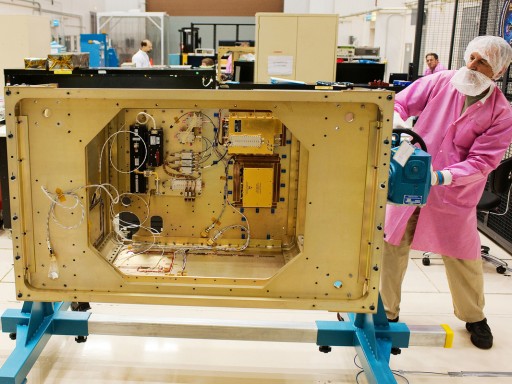SCaN Testbed

The SCaN Testbed, or Space Communications and Navigation Testbed, was designed and built at NASA’s Glenn Research Center over the last three years and will be active aboard ISS for about one year after being delivered by HTV3. ScaN provides a testbed for the development of Software Defined Radio (SDR) technology. The SDR devices are part of the ScaN Payload. SDR technology with software based communications and navigation functions provide ground mission planners the capability to change the functionality of the radio once on-orbit. Changing the operating characteristics of the radios offers future payload operators the opportunity of changing a mission in progress, adapting to new science opportunities and increased data return. The SCAN Tested will enable NASA to evaluate the SDR Technology for future use and tests its capabilities. The functions performed by the three radios include communication with the Tracking and Data Relay Satellite (TDRS) system in both S-Band and Ka-Band, receive Global Positioning Satellite (GPS) signals, and enable proximity communications between the International Space Station (ISS) and approaching vehicles.
The flight hardware consists of a enclosure installed on a Flight Releaseable Attachment Mechanism. The SCAN Payload consists of five main components: the avionics system, the software defined radios, the radio frequency (RF) subsystem, the antenna pointing system, and heaters. Except for the five externally mounted antennas, most of the subsystems are installed on the inside of the enclosure.
